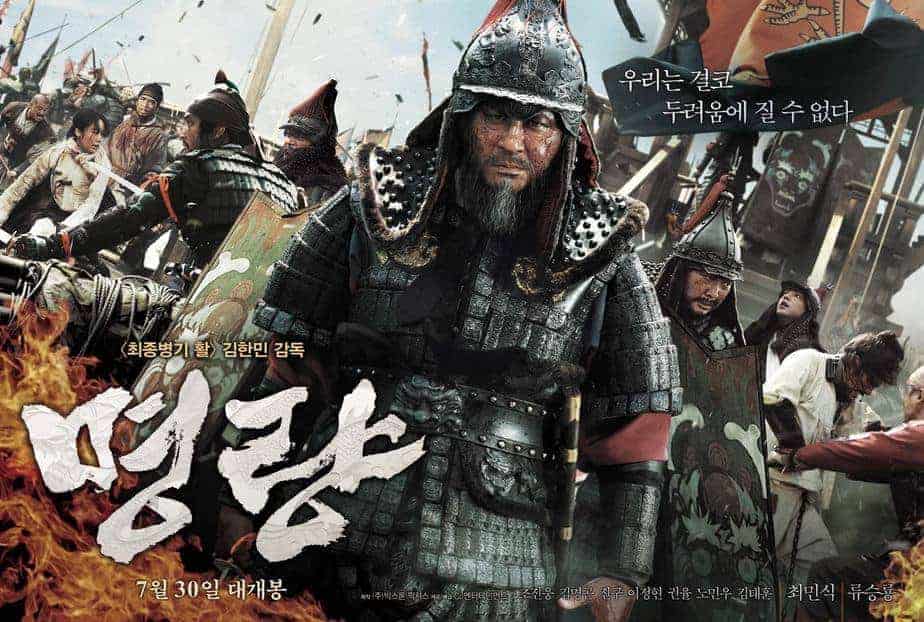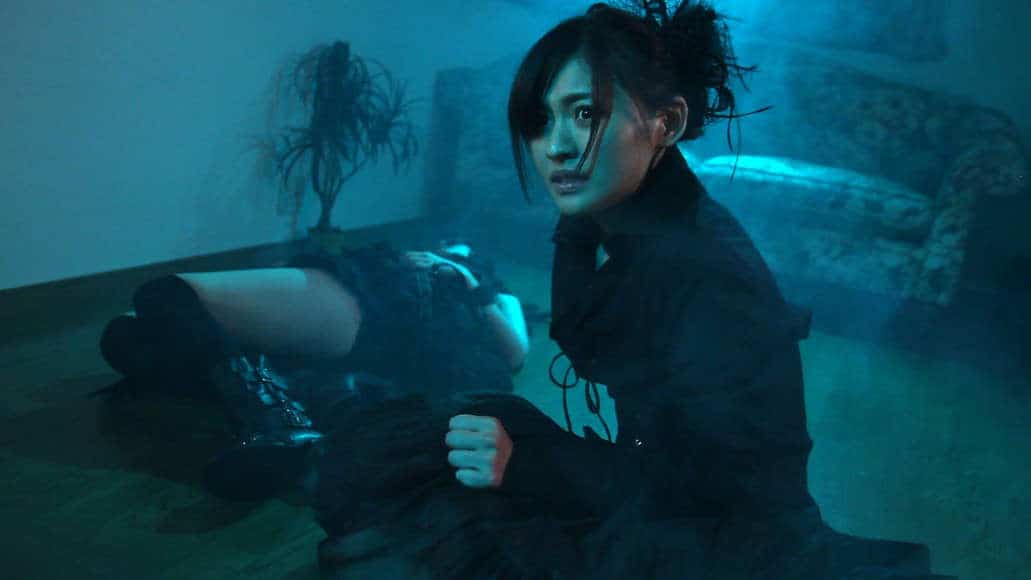After two successful entries in the series, Daiei Studios closed out the year 1966 with the third and final in the Daimajin saga, with Kazuo Mori taking on the adventures of the stone statue guardian of the oppressed. Initially never released in America until a VHS release in the 1990s when the series was first introduced on the format, this slightly underwhelming but still fun venture comes to home media courtesy of a box set from Arrow Video.
In a mountainous region of Japan, evil warlord Lord Arakawa (Toru Abe) kidnaps the men of nearby villages to use for slave labor, producing gunpowder from his sulfur pits. After learning one of his prisoners has escaped, he invades a peaceful lakeside village during one of their annual festivals. In the course of burning down buildings, executing helpless civilians, and generally looting and pillaging, the warlord's men blow up the statue of the village god and sink the pieces deep in the lake. Everything looks hopeless for the people of the village until a strange force from beneath the water's surface begins pulling enemy soldiers to their deaths. Encouraged by the sign that the local God has come back for its revenge, a band of young boys Daisaku (Shinji Hori), Sugi (Muneyuki Nagatomo), Tsuruchiki (Hideki Nimomiya), and Kinta (Masahide Ilzuka) decides to rescue their enslaved fathers on their own.
Like the other entries in the series, “Wrath of Daimajin” has a lot going for it. Series writer Tetsuro Yoshida once again manages to construct an enjoyable setup that provides enough cause to ensure the creature's entrance is reasonable. That comes off due to the immensely enjoyable villainy displayed by Lord Arakawa, who shines as the most unreasonable warlord of the bunch. Despite featuring a plan that comes up short compared to the end-games of the others, the whole purpose of enslaving the workers of nearby villages to use them as slave labor in a ploy to extract sulfur in use for making gunpowder and other weapons is a strong start. The fact that he organizes actual executions on those that try to escape, rather than whipping or beating is a first, since this was actually carried out instead of interrupted. Carried on by the child-like sense of adventure that takes place with the kids attempting to rescue their parents and forced to turn to Majin for help, the setup here is quite good.
As well, “Wrath” also scores incredibly well with the sense of spectacle involving the creatures' existence. The very opening is a wholesale spectacular onslaught of destruction, with the creature's wrath bringing about ferocious winds, pouring rain, and landslides that tear a small village apart, in a fantastic opening. The miniature work is incredible and the devastation brought about is impressive to watch, much like the later scenes with the creature itself in action. As to be expected, the rampage here is immensely fun and enjoyable, with the creature appearing at the sulfur pit and destroying the rock wall to make its presence known. The ensuing chase through the mountain roads and the full-scale assault on the area since the creature continually crashes into rocks or other equipment left behind which ensures tons of chaos, is quite entertaining. Managing to include the usual destruction of the miniature castle since the compound is located right next door, the scale of the destruction is impressive by generating a lot of destruction in a small scene that is pulled off flawlessly. To be expected, it's the highlight of the whole piece.
Despite the positives, “Wrath” is a slight downgrade from the others. The main factor here is a slow-going first half that doesn't come close to the fun of the previous entries. Whereas the first two films were more concerned with the exploits of the main warlord to establish the need for Majin's arrival, here we spend more time on a quest into the mountains trying to discover what's going on. The adventures of the kids against the warlords' guards trying to capture them have their moments when they're tricking the guards and outwitting them or escaping by raft down a raging river, since there's something happening in these scenes. Otherwise, there are long stretches here where it's just the kids trampling through the woods, while the guards are shown to be ineffective in capturing them, accompanied by intermittent cuts back to the sulfur pit. This makes for a somewhat sluggish experience in waiting for the God to come to life in the final act which feels further along than the other entries but doesn't detract from the rest of the film too much.
A bit uneven in the first half in regards to utilizing a proper build-up to make Daimajin coming to life necessary while also running through some underwhelming aspects, “Wrath of Daimajin” has those few issues keeping it from being the classic the others are. Still, fans of the series looking to continue his saga or those just plain curious about the series will find a lot to like here while.
















